47 Things About Hyper Pop Christian Songs You’ll Kick Yourself for Not Knowing
Hyper pop Christian Songs is an irregularly defined music genre and movement characterized by an exaggerated or minimalist take on current popular music. Standard performers labeled with the term tend to incorporate pop, hip-hop, and sometimes electronic elements, drawing upon alternative, urban, and contemporary music cues. In contrast to other types of music, the production level of modern hyper pop is relatively high, frequently consisting of sample-based instruments and other highly specialized instruments. Due to this focus on high-tech production, the sound signature often contrasts with mainstream or traditional pop, with elements ranging from disreputable to experimental.
Hyper pop artists bridge the gap between experimental and commercial, often focusing upon elements familiar to early Internet musical trends. These include sampling from popular music online, including the indie mentioned above rock and roll, pop, and indie/alternative music movements. This convergence of styles is indicative of the rise of the hyper pop sub-genre as an important and exciting musical style and sub-style within the emerging music industry. Hyper pop artists are often grouped under the label, with each artist focusing upon a signature sound and approach, although some artists are members of more than one sub-genre. Famous examples of this hybrid genre include the band Five Finger Death Ring, which incorporates several instruments not traditionally associated with rock (drones, choruses, keyboards).
Due to the comparative lack of vocals, PC Music has provided an excellent opportunity for aspiring artists to develop their vocal skills. Unlike traditional pop music, most hyper pop artists omit vocalist vocals in their songs, reflecting their overall song score. This decision to eschew vocal tracks gives PC Music a distinct sound and flavor, especially compared to the popularity and success of modern pop music, which is primarily sung. A popular trend within PC Music is for artists to incorporate a string of samples into the composition of their songs, which they then insert into the overall mix or “verse.” Examples of this technique can be heard throughout the genre, with artists such as gauzy and sunny dazzle employing the method on different occasions.
Popularizing the early 2000s genre, hyper pop artists like the Beatles and Blur utilize simple, repetitive instruments, guitar riffs, synthesized sounds, and vocal harmonies to create a catchy, danceable sound. However, unlike pop, which is centered on melody, the structure of the early 2000s genre is made up of repeated, non-organic elements. Examples of this genre include the British band Pop idol (also known as Oasis) and the American rock band Blur.
While it is generally accepted that the rise of the hyper pop movement was directly connected to the rise of hip-hop, it should be noted that the two genres share many common elements. Both are characterized by the complex nature of the production, which includes sampling from a variety of sources and layering unique vocals. The production techniques used in hyper pop and hip-hop often cross borders and are not tied to any specific musical sub-genre. In both cases, popular music from several artists is mixed and re-mixed, sometimes completely unrecognizable, producing something entirely new and different to listeners. Examples of this can be heard on the chart-topping track “OO” by Outcast and numerous other major hit singles from Britney Spears and Kanye West.
Unlike pop and rap, where the performer’s personality and vocal style are usually the focal points of attention, hyper pop allows for a greater emphasis on lyrics and the musician’s performances. Unlike hip-hop, which focuses heavily on the beat, bass, and drums, in modern-day hyper pop, the artists usually focus on their vocals and instrumentation. This has the effect of making the genre much more personal, as listeners can relate to the musician’s performance more quickly than they would a ‘flatter’ genre like hip-hop or R&B. The lyricism of modern-day hyper pop can also be much more intense, as many artists delve deeply into their personal life and career influences and ramble about their feelings rather than repeating themselves or playing it safe. As a result, the genre can become very emotional and even very funny (think Britney Spears and Rihanna) due to the artist’s tendency to conflate personal and professional aspects of their life and career.
One of the most distinctive features of hyper pop that sets it apart from other genres is the relatively recent emergence of what can loosely be described as ‘post-metal. Geezer and Mirrors are two examples of brands that utilize the industrial metal genre to create the sound for their hyper pop songs. The use of heavy metal and the death metal aesthetic in popular music has become rarer, with most artists instead opting to create a more ‘organic’ and less guitar-driven sound. This stylistic change was spurred by the birth of the new wave of geeks and computer programmers who strove to re-create the sounds of the old masters, creating a new genre that was distinctly different from both traditionalists and new age artists.
There are still many things that make hyper pop unique. One of the biggest influences is that it remains very relevant in society despite being so new. Hyper pop provides a safe platform for new musical trends to emerge, often through elements like pop but which draw on elements of rock, techno, metal, or even new wave. It also tends to cross over well with other genres, tapping into the mainstream and making it possible for new artists to gain mainstream success. These days, it seems that hyper pups will continue to have an important role to play in the future as their influence continues to grow.
Hyper pop is an ambiguous music term and loosely defined style of urban music. Artists commonly labeled with the time typically inject urban tendencies and pop sensibilities, borrowing gimmicks from modern-day commercial dance music, electronic, and hip-hop genres. Some common characteristics of the artistry are an obsession with nostalgia (i.e., “The Eternal” by Donnas) and a “funky” sense of personality (Kanye West’s ever-expanding catalog of guest spots embodies this). Hyper pop artists generally perform in small venues with small crowds to attract attention.
This style of music has evolved into two major subgenres: pop and techno. Pop is the more popular, though it has slightly different traits than either techno or hip-hop. The goal of a pop musician is to craft a tune that appeals directly to an audience, rather than hinting at ideas or concepts that could be explored in other genres. At the same time, it’s miles important to understand that this type of music is almost always a reflection of current popular culture. Popular songs from the late seventies and early eighties frequently incorporate elements of comedy, romance, and music for children, all of which are currently popular subjects in the visual arts.
There are two distinct types of hyper pop artists. The first group features members from groups such as the White Stripes and Parliament-Hearns. The second consists of artists who draw inspiration from famous PC Music artists. Examples of this style include producers such as Koven, Deasil, and Chrome.
In contrast, the second kind of hyper pop artist is generally a more established pop group member. These artists often focus on creating entirely original music rather than borrowing aspects of existing material. Examples of these artists include producers such as Net suicide, Fazer, and Pharrell Williams. A major benefit of hyper pop artists and their production is the availability of material from many sources. A quick listen to a hyper pup song, for instance, will reveal a wide range of sounds from which the artist can draw.
Hyper pop has gained popularity over the past few years. It is quickly growing in both popularity and notoriety. The truth is, there are several sub-genres and styles of hyper pop, each of which is more popular with individual artists than with audiences.
Perhaps the most popular of these newer genres is Dorian Electra’s “chemistry.” Based on early work by artists such as keyboards player/composer Julian Gough, the term “Dorian pop” refers to modern pop music that takes elements of “punk” and “hip hop” and combines them with features from “goth.” Dorian Electra is known for her electro-hip-hop sound. Other contributors include Jalin, Chinx Phaeton, and Kit Cope. The term “Dorian pop” continues to grow as artists such as Gough and chinx Phaeton release more refined pop music that draws on elements of the scenes.
One other common form of hyper pop exists in the genre known as “grey pub rock.” Artists who fall into this microgenre are generally associated with classic pop music groups such as The Beatles. This can easily be confused with the “post-rock” genre, often produced by bands who create ambient or noise-based music rather than pop music. Grey pub rock is popular with artists who prefer minimalistic sound effects and compositions. Many of these artists have become known for producing music specifically for hardcore metal or doom-oriented scenes.
Hyper pop has appeared throughout the years, and it will likely continue to grow as the genres defined above continue to evolve and change. Unlike most other forms of popular music, Pop music tends to constantly become and change as new sounds and styles are introduced. Famous hyper pop musicians such as Akon and Akobo have helped fuel the popularity of this fun genre, which is one of the more unique areas of pop music today.
Hyper pop is an imperfectly defined term applied to a collection of related music genres. Often, artists labeled as “hyper pop” will combine elements of other styles into their signature sound, sometimes completely changing them in the process. Musician and creator Jack Knight coined the term. He introduced this concept in his song “Hyperball,” which is also the album’s name. Since its inception, several other pieces utilize the same basic melody and key but take the sound one step by making it darker or lighter, faster or slower, funkier or gentler.
Like many of the music trends of the late 1990s, the popularity of hyper pop was fueled by the rise of the music scene in the United States. Popular music events such as the Summer Olympics and MTV Music Awards were fueling interest in the genre. In response, artists took a cue from the emerging sound and incorporated it into their work. The result turned into a new fashion of song that mixed elements of pop, rock, folk, hip-hop, techno, metal, and several other elements.
Many people categorize hyper pop as a type of pop music that borrows from many other styles in the process. They can take elements from all genres but add something extra, such as a faster tempo, funkier sound, or an edgier feel. These songs are often produced with a band or an artist known for doing similar styles of music, such as Gothic or indie rock. It’s often difficult to determine whether a song is indeed “hyper” or not. There are many different takes on what makes a song “hyper,” and no consensus.
PC Music, or “Pop Music,” is the umbrella term encompassing most hyper pop forms, including pop, folk, punk, reggae, and even country. The PC Music sound is often considered one of the most “accessible” of these styles, as it’s easy to pick up and play. The music is created on a computer, which means the sounds are digital – much like a computer program. Many artists and musicians have become famous simply because they can create sounds that many others can only dream about.
PC Music has influenced and attracted artists who fit into any of the following categories: Indie Rock, Dubstep, Hip Hop, Grime, and Noise. The growth and popularity of PC Music have given rise to many new, independent artists who have become successful and known through the PC Music scene. Some of the most notable examples of this are Skrillex, Diplo, and producers such as No ID, Pharrell, and Chromeo, who have become major figures within the pop/rock scene.
The biggest distinction between hyper pop and other similar genres is the massive production to make a song. Unlike other subgenres, this kind of music has a production value typically two or three times higher than what you would expect. This is because the songs are written with production techniques and instruments specifically made to produce high-quality music that goes beyond the scope of a home studio setup. The result is very “in your face” and different from other forms of pop music. Many independent artists have gained mainstream popularity because their songs were recorded using expensive studio equipment, which is something not all artists can afford.
Another characteristic of hyper pop that sets it apart from other genres focuses on unique vocals and guitar techniques. Many bands with a hyper pup base, such as Girls Against Boys and Laura Marling, have produced music that was explicitly aimed at creating an atmosphere reminiscent of early 60’s pop, which helped them gain popularity in the music scene. Indie rock artists who create songs with solid female vocals also have a solid hyper-pop genre foundation.
In recent years, the popularity of hyper pop has decreased slightly, primarily due to the rise of more popular poppy genres such as punk. However, there may nevertheless be a notable deal of popularity in this music, mostly online. Many people are involved in the industry, especially online, who promote the genre, which helps keep it exciting and viable as an alternative form of music. It is important to remember that this style of music is constantly evolving, so future versions of this genre will likely feature new components. The internet is an excellent location to learn about new elements introduced and used in this style of music, so it should certainly be worth investigating further.
Hyper pop is a loosely defined term, denoting a hybridized music genre and aesthetic perspective typically characterized by an extreme take on today’s popular music. Artists commonly tagged with this label often incorporate pop and other non-traditional sensibilities, borrowing staples from hip hop, techno, and different electronic music styles. While it shares some elements with many popular types, hyper pop also frequently explores space, fantasy, horror, rapper styles, pop music, and even noise art. The term was created in the late 1980s and has grown into one of the most prominent and influential genres in popular music, influencing various music artists, from musicians to celebrities, from producers to DJs.
Influential artists whose work is often tagged as “hyper pop” include producer spins such as unreleased, unsigned band Academics, noise musician Akon, and rapper/singer Suze Kelsie. Akademiks are noted for their influence and cult followings. At the same time, Suze Kelsie became known for her collaboration with Kanye West and has become one of the most distinctive pop/rock vocalists. Other standard performers include rapper Earl Sweatshirt, Icelandic artist Bjork, and rapper/singer Dot Da Genius.
Hyper pop can be considered a sub-genre of PC Music, which has become increasingly identified with hip hop/tech since the latter’s rise to popularity in the early times. A key factor in the genre’s development was adopting pop music concepts by acts previously situated in the hardcore realm of indie music – producers like Runway Slim, speciousness, and Sonic Youth. This gave rise to the hyper pop aesthetic, which still resonates with today’s music industry. Pop music artists have also adopted the PC sound – from Kanye West’s “Famous” to Nine Inch Nails’ “I Remember That Feeling.”
An abundance of distorted vocals characterizes the PC Music aesthetic, frequently mixed with samples from other songs. PC Music artists like this are often thought of as” Wiley” or “mainstream.” In terms of production, the hyper pop style is characterized by “dubs” (dubs are pre-recorded vocals, typically in four-on-the-floor stereo). These dubs can be mixed with other instrumentals but are left in their original state.
With the rise of hyper pop, the PC Music industry has experienced several changes. This is in part due to the shift in focus towards this sub-genre, which peaked with the release of Akademik’s “A Boy Brushed Red Living in a World of Black and White.” The new focus has helped expand the aesthetic palette for artists and producers, resulting in further innovations. One of the maximum great traits of the 2010s is the emergence of “EDM.” “EDM” stands for “Electronic Dance Music” and was created by producers like Akademiks, Diplo, Cut Chemist, and others in the new decade.
Although there are a few dialogues as to whether “EDM” is indeed a distinct sound or just a rebranding of hyper pop, it is clear that the artists who produce and perform along these lines have a strong understanding of what makes this style so appealing. “EDM” artists feature heavily in the Los Angeles music scene, and many have emerged on the major label rosters since the beginning of the new decade. Academics is well known within the LA music scene, having worked with producers like Kanye West, J. Cole, 50 Cent, and others. Many of the new wave LA artists are represented by Academics.
In rap, “EDM” is often confused with post-rap, although not precisely the same genre. Unlike rap which is primarily constructed from a single “genre” of music, the structure of most rap songs today involves two or more separate “melodies.” The system then combines and composes these various “melodies” into a cohesive whole. Rap is usually done through a synthesizer or other highly technically advanced instrument, but the songs are often written more as freestyle raps in hip hop.
Hip hop and rap both employ elements of hyper pop. The similarities essentially center around the central idea that both genres require the listener to listen and become involved with the lyrics and instrumental tracks and the song’s overall feel. It should be noted that hyper pup artists tend to have longer careers than their mainstream counterparts – if you look at the charts from early to mid-2021, there are very few major crossover stars (Kanye West and Jay Z, for example). As such, the future for this genre seems uncertain.

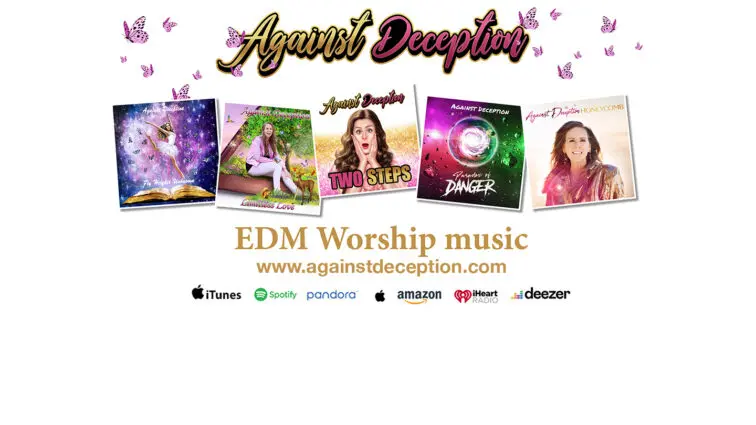

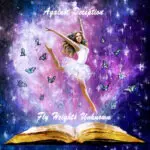
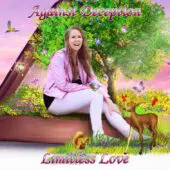
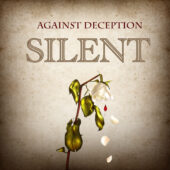
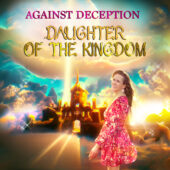
Comments
This post currently has no comments.